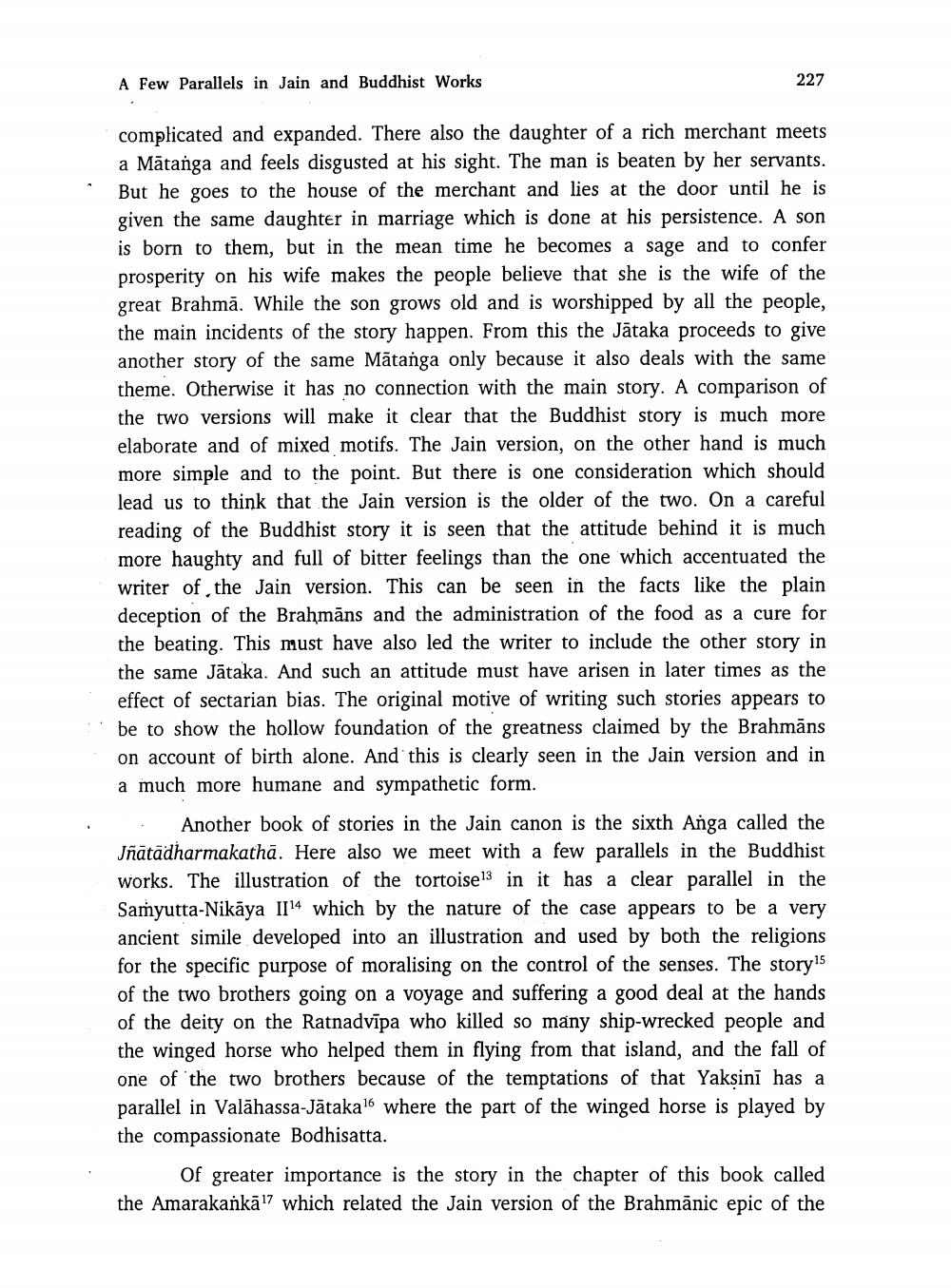________________
A Few Parallels in Jain and Buddhist Works
227
complicated and expanded. There also the daughter of a rich merchant meets a Mātanga and feels disgusted at his sight. The man is beaten by her servants. But he goes to the house of the merchant and lies at the door until he is given the same daughter in marriage which is done at his persistence. A son is born to them, but in the mean time he becomes a sage and to confer prosperity on his wife makes the people believe that she is the wife of the great Brahmā. While the son grows old and is worshipped by all the people, the main incidents of the story happen. From this the Jātaka proceeds to give another story of the same Mātanga only because it also deals with the same theme. Otherwise it has no connection with the main story. A comparison of the two versions will make it clear that the Buddhist story is much more elaborate and of mixed motifs. The Jain version, on the other hand is much more simple and to the point. But there is one consideration which should lead us to think that the Jain version is the older of the two. On a careful reading of the Buddhist story it is seen that the attitude behind it is much more haughty and full of bitter feelings than the one which accentuated the writer of the Jain version. This can be seen in the facts like the plain deception of the Brahmāns and the administration of the food as a cure for the beating. This must have also led the writer to include the other story in the same Jātaka. And such an attitude must have arisen in later times as the effect of sectarian bias. The original motive of writing such stories appears to be to show the hollow foundation of the greatness claimed by the Brahmāns on account of birth alone. And this is clearly seen in the Jain version and in a much more humane and sympathetic form.
. Another book of stories in the Jain canon is the sixth Anga called the Jñātādharmakathā. Here also we meet with a few parallels in the Buddhist works. The illustration of the tortoisel3 in it has a clear parallel in the Samyutta-Nikāya II 14 which by the nature of the case appears to be a very ancient simile developed into an illustration and used by both the religions for the specific purpose of moralising on the control of the senses. The story15 of the two brothers going on a voyage and suffering a good deal at the hands of the deity on the Ratnadvīpa who killed so many ship-wrecked people and the winged horse who helped them in flying from that island, and the fall of one of the two brothers because of the temptations of that Yaksini has a parallel in Valāhassa-Jātaka6 where the part of the winged horse is played by the compassionate Bodhisatta.
Of greater importance is the story in the chapter of this book called the Amarakankā" which related the Jain version of the Brahmānic epic of the




